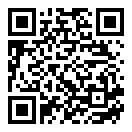Abstract:
Plato has called the content of some of his philosophical works, including his Timaeus, as “ortos mythos” and “eikos logos”. From a methodological standpoint, the question arises as to what he means by these two terms. This article tries to answer this question. Myth shapes the essence of some of Plato’s treatises. Such myths are purified through dialectical dialogues, so he calls it “ortos mythos” (right myth). However, because one can find justifications for the content of such treatises, and in this way to become closer to “logos”, he calls it “eikos logos” (quasi-true discourse). A subtle point in this issue is that in Plato’s view, the relation between these two, not only is not one of opposition, but rather one can say that “mythos” is alongside “logos”. This means that “mythos” is considered to be a way to “logos”.
In understanding Plato’s model, it is taken for granted that for him, “ideas” are the prototypes for explanation, including for explaining how the world has come to existence and how it changes. The only problem remains in superposing explanations with such prototypes. Plato, however, never gave up in this process; rather he encouraged others to try to find the complete and ideal explanation.









